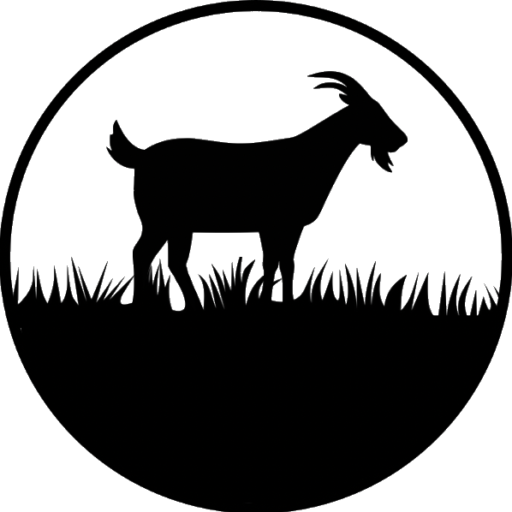Goatscaping
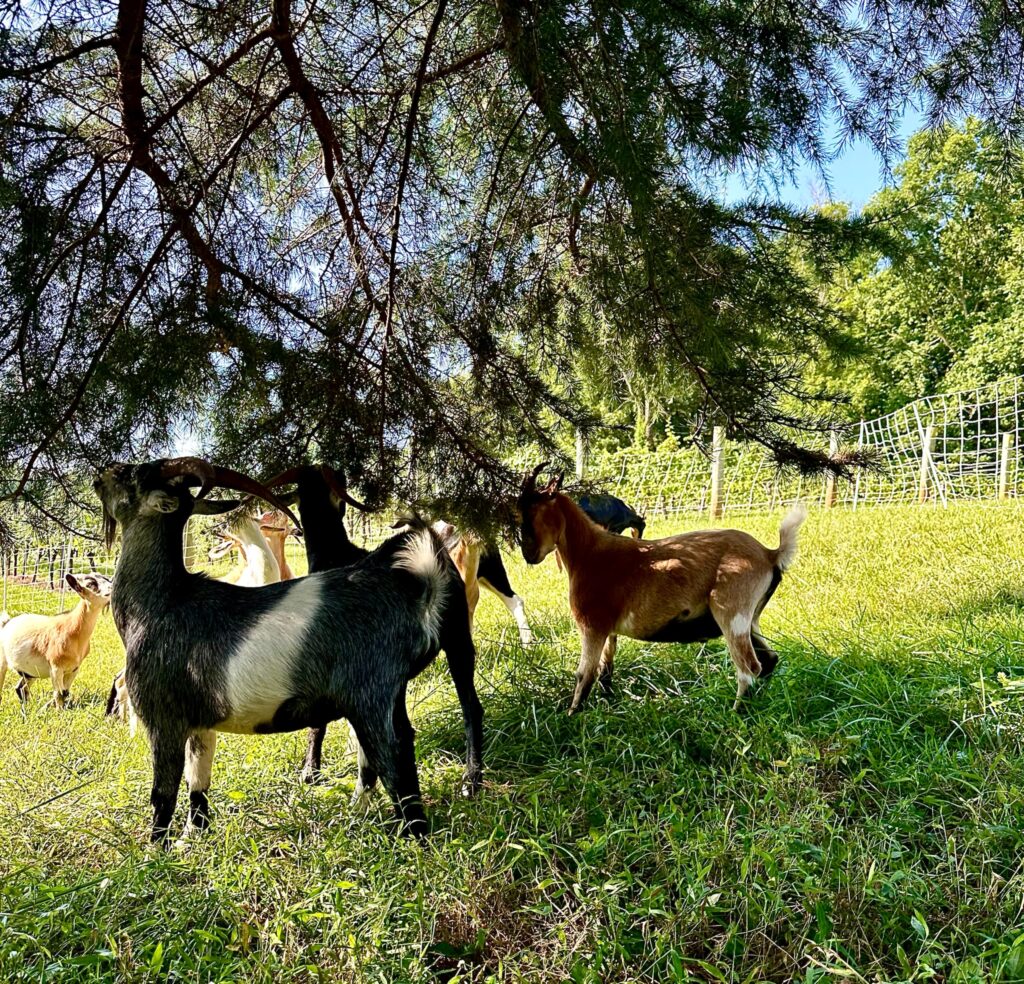
What is Goatscaping?
Goatscaping is a natural and environmentally friendly method of managing unwanted vegetation. Instead of relying on machines, human labor, or harmful herbicides, goats graze targeted areas, naturally clearing brush, invasive plants, and dense vegetation. Their effectiveness is unparalleled, as they can reach areas difficult for machinery, such as steep slopes, rocky terrain, or places near sensitive waterways.
This practice is gaining popularity because it offers a sustainable and less invasive alternative to conventional landscaping techniques. Herbicides can harm water, soil, and non-targeted plants and animals, while mechanical removal can disturb the environment and encourage the regrowth of invasive species. Goats, however, love to eat plants like poison ivy, kudzu, and honeysuckle—precisely the types of vegetation that property owners often want to remove. And while they enjoy these troublesome plants, goats leave behind nothing but natural fertilizer in their manure, helping to rejuvenate the soil.
Goatscaping works well in various settings: residential yards, commercial properties, public lands, steep or hard-to-reach areas, and even new development sites. It is ideal for clearing brush, maintaining landscapes, and controlling noxious weeds in a way that reduces the need for herbicides and heavy machinery.
Goatscaping involves using goats to manage unwanted vegetation naturally. Goats are well-suited to grazing on invasive plants like buckthorn, honeysuckle, and autumn olive, which often outcompete native plants and reduce biodiversity. This method offers an eco-friendly solution to invasive species control, avoiding the need for chemical herbicides or labor-intensive manual removal. Goats are easy to transport and navigate rough terrains, making them ideal for large or hard-to-reach areas.
Goats are nature’s perfect landscapers. Their unique biology, behaviors, and natural diet make them incredibly efficient at clearing unwanted vegetation, especially invasive and stubborn plants that most other animals avoid. But why exactly are goats so magical when it comes to this work?
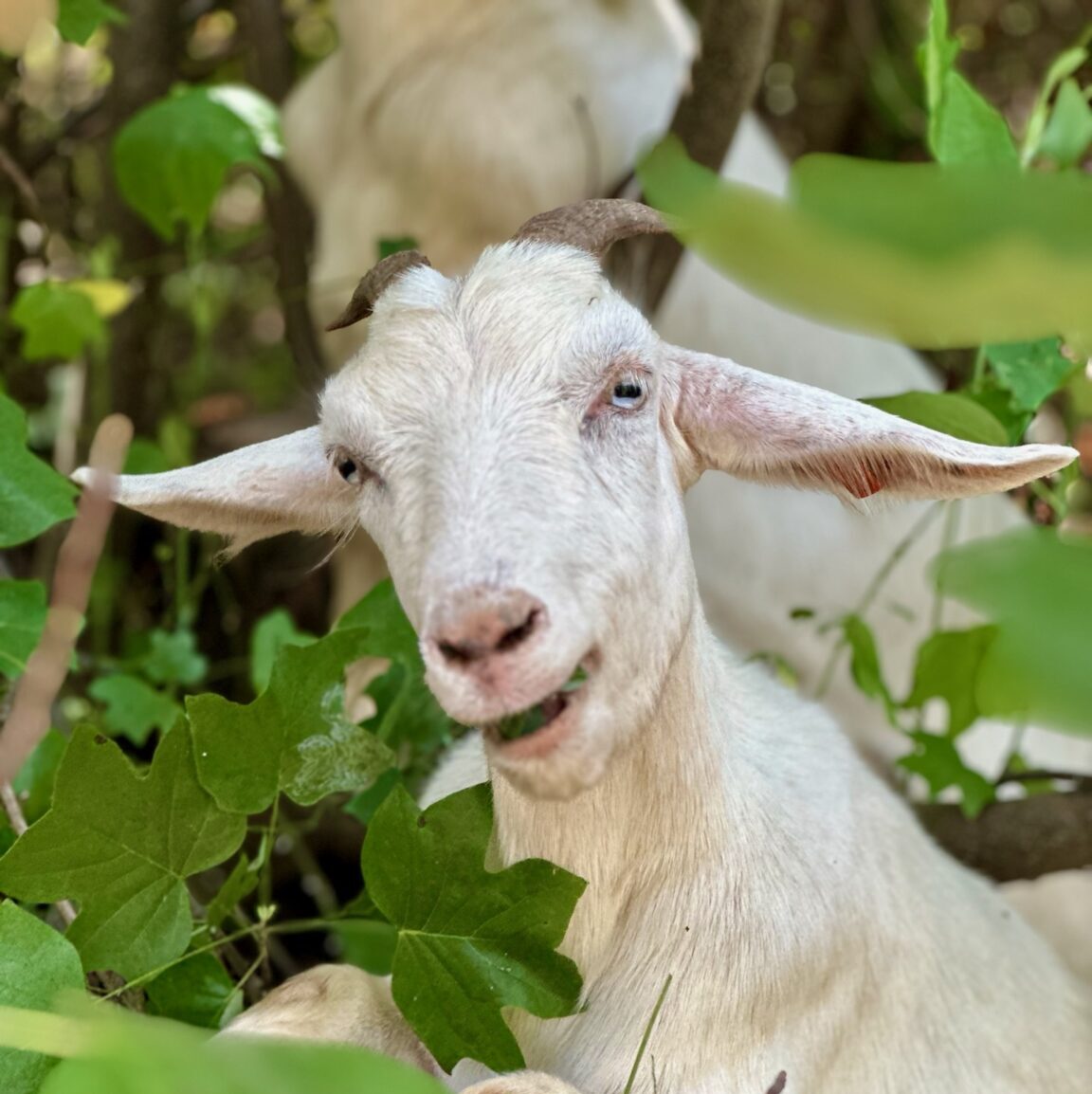
A Natural Appetite for Problem Plants
Goats love to eat plants that most people want to remove, such as poison ivy, kudzu, English ivy, and honeysuckle. These plants, often invasive and destructive to local ecosystems, are some of their favorites! By eating these problem plants, goats help control their spread, protecting local environments and native plant species.
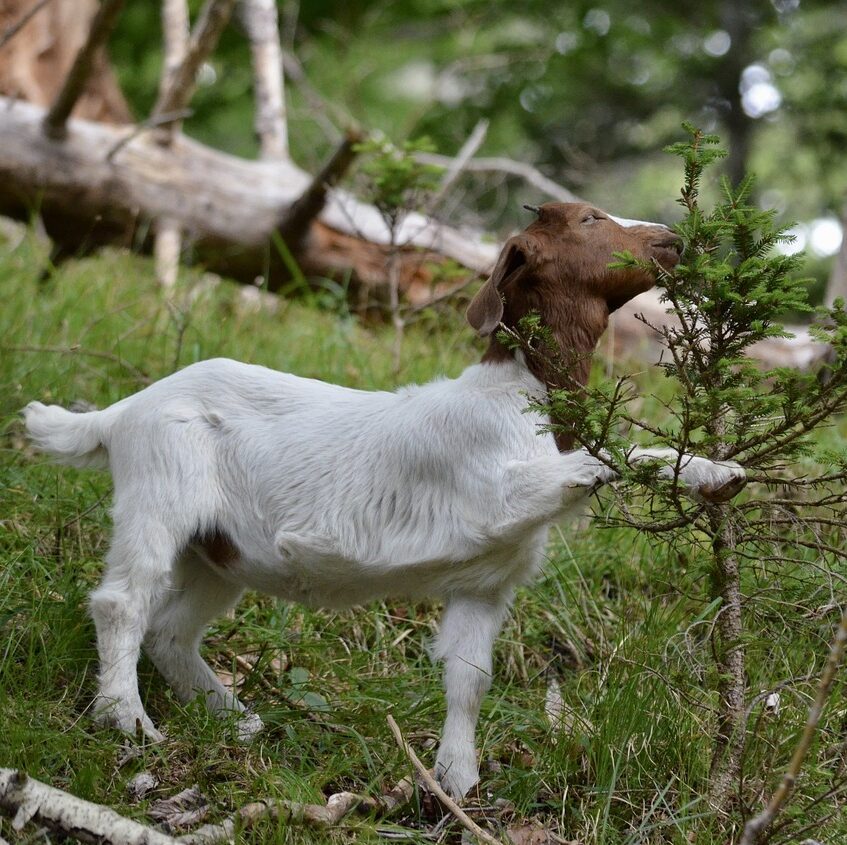
Efficient Grazers
Unlike other animals, goats have narrow, triangular mouths that allow them to chew and crush the vegetation they eat thoroughly. This process destroys the seeds of unwanted plants, preventing them from being fertilized and regrowing. In contrast, machine-cutting methods often encourage plant growth by leaving viable seeds behind. Goats’ grazing, on the other hand, helps suppress regrowth, giving property owners a longer-lasting solution.
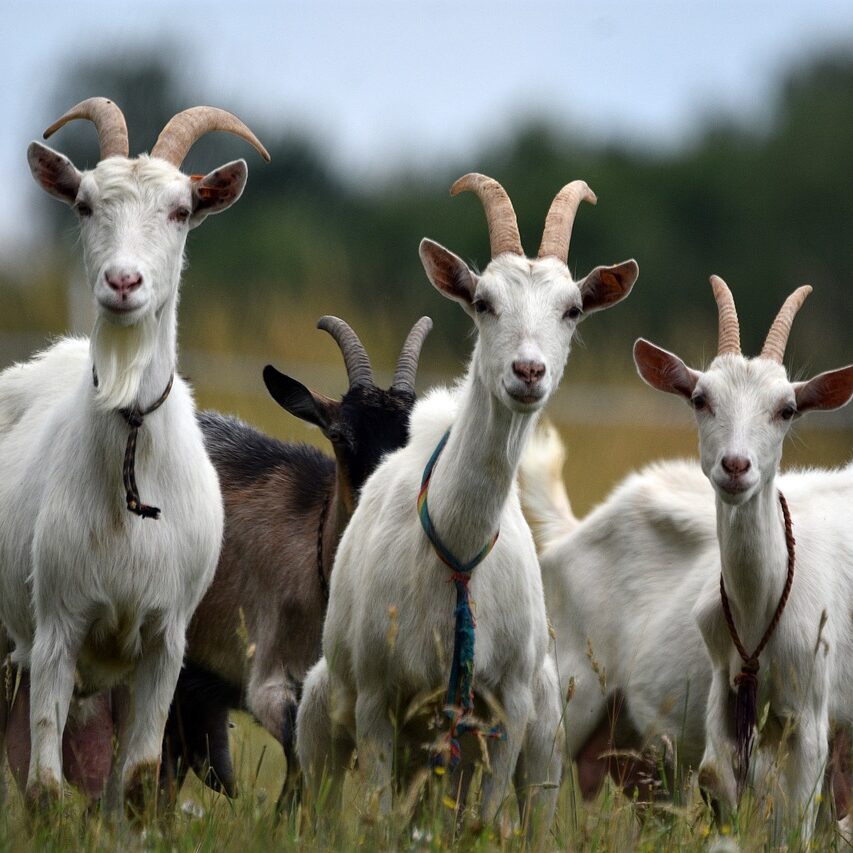
Eco-Friendly Movers
Goats are light on their feet, which allows them to navigate steep, rocky, and sensitive terrain with little risk of erosion or damage to the landscape. Their agility makes them ideal for clearing brush in areas where machinery can’t go without causing harm.
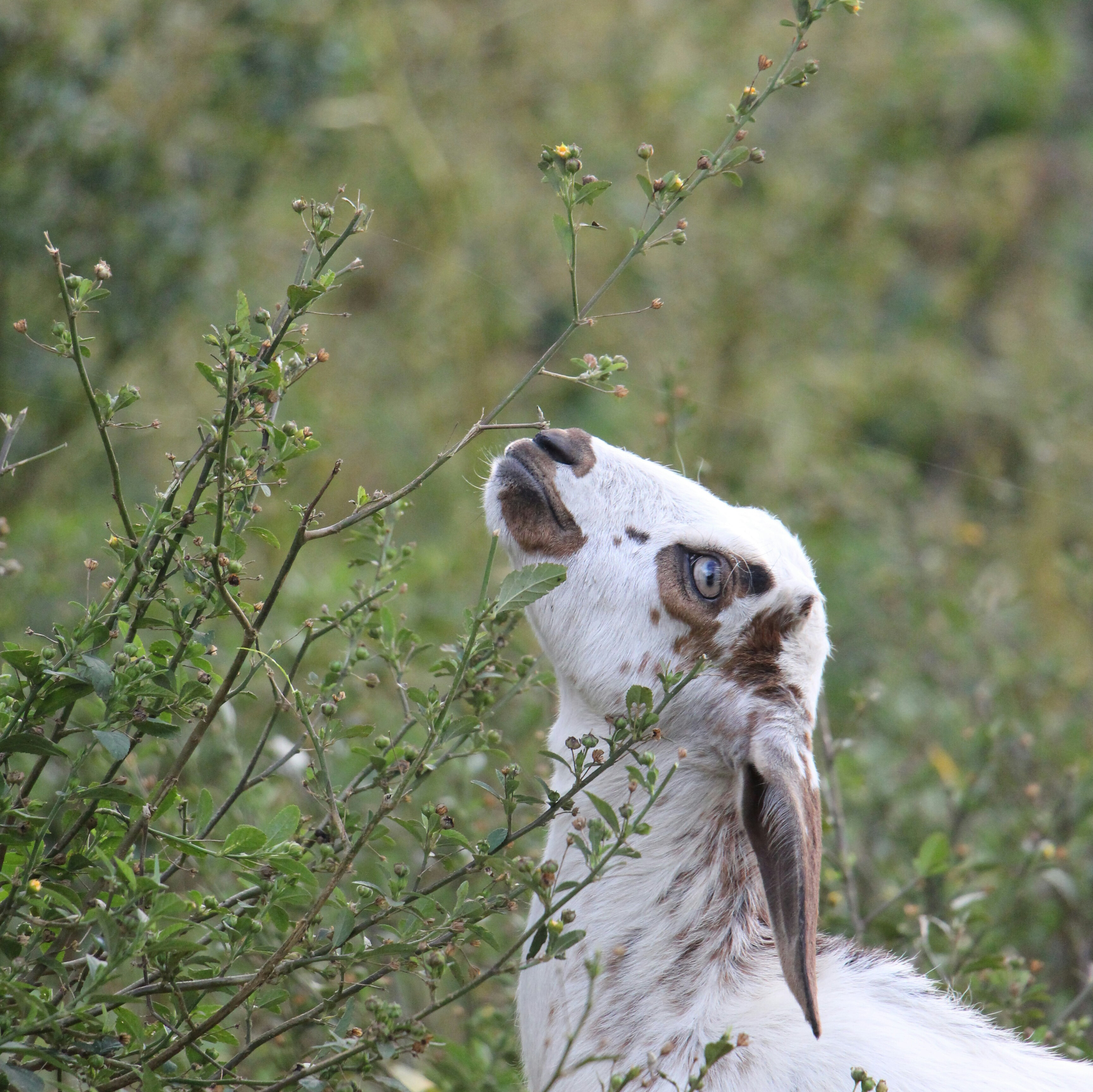
Selective Diet
Goats prefer eating weeds and shrubs over grass, which allows them to clear problem plants without damaging lawns or grass-covered areas. This makes them ideal for clearing dense vegetation while leaving grassy spaces untouched.
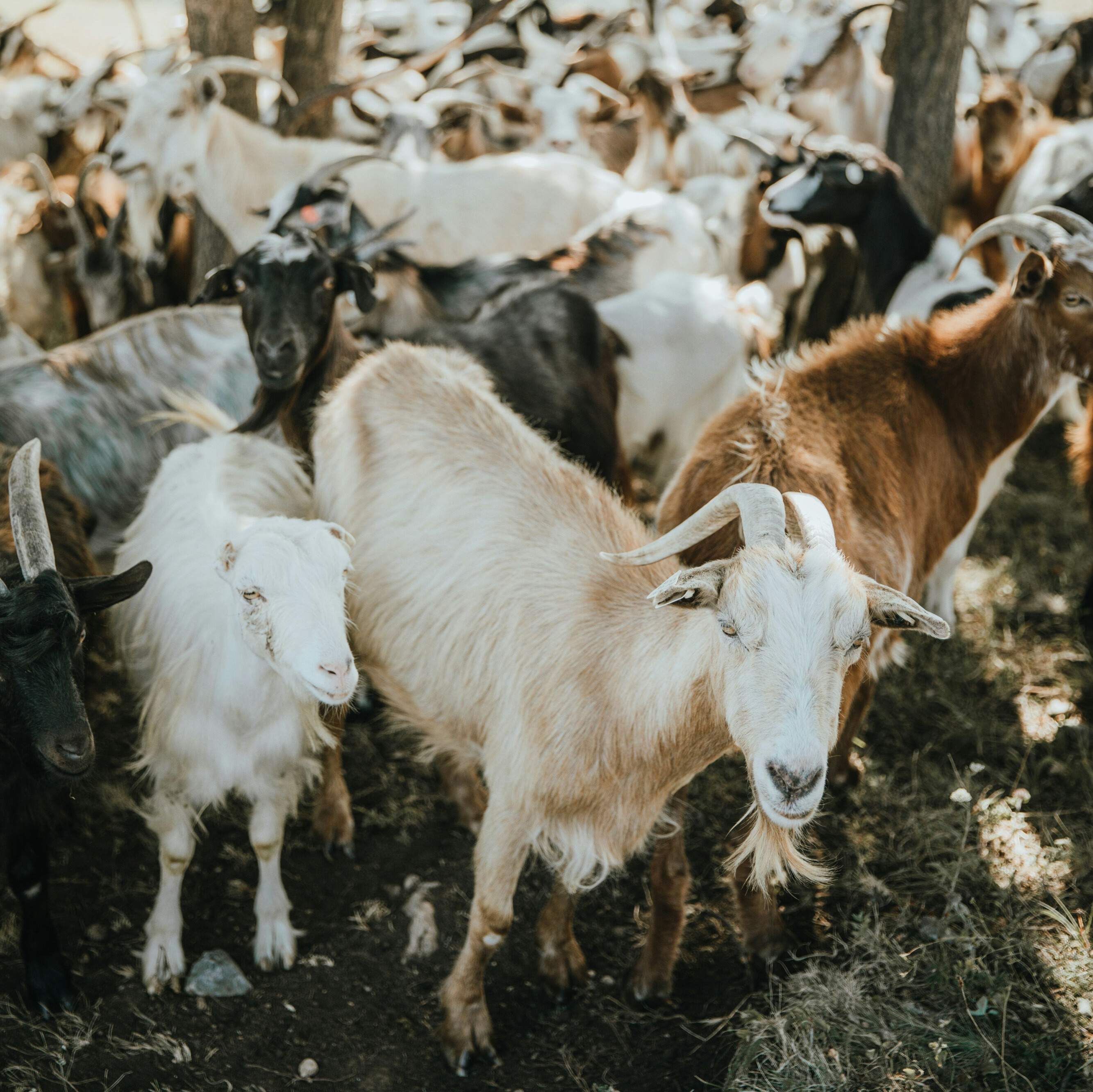
Natural Fertilizers
As a bonus, goats leave behind valuable natural fertilizer in manure, which enriches the soil and promotes healthier plant growth. Unlike synthetic fertilizers or herbicides, goat manure is safe for the environment and enhances the ecosystem rather than depleting it.
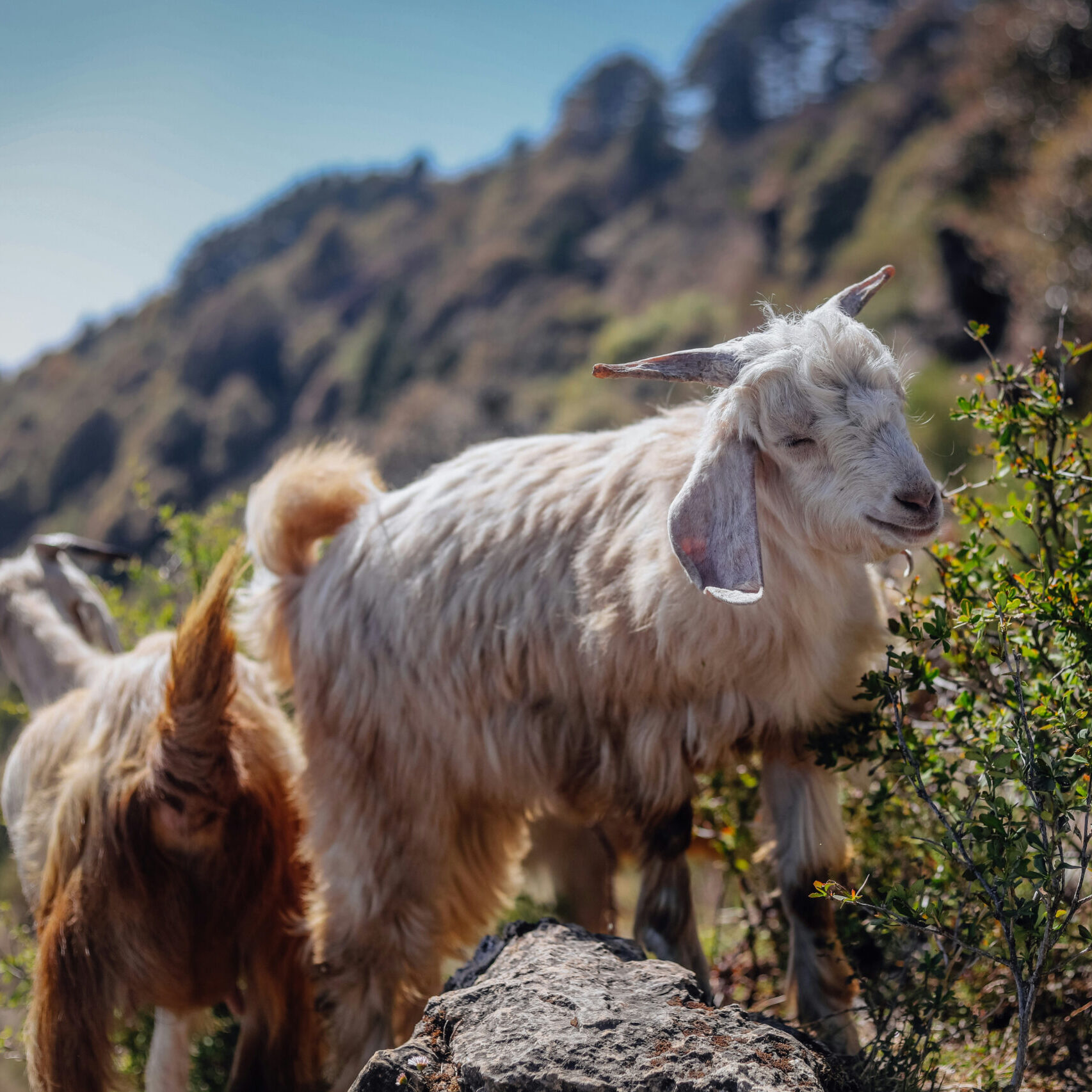
Perfect for Difficult Terrain
Goats thrive in environments that are difficult for humans and machines to manage. They can easily navigate these spaces, whether steep slopes, rocky landscapes, or areas with sensitive natural features like waterways. Their ability to work in such challenging conditions sets them apart as a unique and effective solution for invasive plant removal.
Step 1: Site Assessment and Planning
The first step is to call us at 336-957-0455 to schedule your free, in-person estimate. We’ll then visit your property at a time that’s convenient for you to conduct a thorough evaluation. During this visit, we’ll assess the types of unwanted vegetation, examine the terrain, and discuss your vision for the space. To ensure long-term results, we can also create a comprehensive three-year grow-back plan for larger projects.
In addition, we’ll evaluate the site’s accessibility for delivering the goats and check for available water sources. After the assessment, we’ll provide a detailed on-site cost estimate.
If your property requires trash or debris removal before the goats can be brought in, our team can add on that service. We also offer additional services such as cutting and mulching vegetation and chipping small trees up to 3 inches in diameter. These add-ons help you achieve your property’s full potential, ensuring it’s precisely where you want it to be before our goats begin their work. Please see full details of all add-ons here.
Our team will work closely with you to develop a customized strategy for clearing the vegetation while preserving desirable plants. We’ll ensure that our goats are safe and healthy in the environment and that you are fully informed and comfortable with the entire process and timeline from start to finish.
Step 2: Setting Up the Fencing
To keep the goats focused on the designated area, we install temporary electric fencing powered by a portable solar panel around the parts of your property targeted for grazing. This fence ensures that the goats stay safe and contained while they work their magic on the unwanted vegetation. The fencing is quick to install and can easily be adjusted based on the size and shape of the property. Depending on the size and isolation of the job, we will set up cameras so our team can keep an eye on the herd and even have guard dogs within the fencing to guard the herd.
Step 3: Goats Get to Work
Once the fencing is in place, we bring the goats to your property. The goats will immediately work, grazing on the problem plants and steadily clearing the area. They work quietly and efficiently, allowing you to go about your daily life with minimal disturbance. And as a bonus, watching the goats is quite entertaining!
The goats take breaks to rest, ruminate, and loaf, but they steadily munch on the vegetation throughout their stay.
Step 4: Post-Grazing Cleanup
After the goats have done their job, we return to load them up and remove the fencing. What’s left behind is a significantly improved property with less vegetation and more open space. The goats’ natural fertilization will also enrich the soil, promoting future growth for desired plants.
We designed the entire process to be low-maintenance for property owners. We handle everything—from setup to removal—so you can sit back, relax, and watch your property transform.
Goats offer an exceptionally sustainable solution to vegetation management. As natural browsers, they efficiently clear invasive plants, brush, and weeds while preserving the soil and native vegetation. In contrast to heavy machinery, which often causes soil compaction and erosion, goats gently graze without disturbing the land.
A key advantage of goats is their ability to sterilize seeds and reproductive plant material during digestion, significantly reducing the regrowth of invasive plants. When used repeatedly, goats help break the regrowth cycle of problem vegetation, making them an ideal long-term solution.
Economically, goats are a cost-effective alternative to machinery, human labor, and chemical treatments. They can work in areas unsafe for people without heavy equipment, which lowers the overall cost for municipalities, nonprofits, and organizations. Many sites like watersheds benefit from Goatscaping because it avoids the environmental risks of pesticides.
Using goats also eliminates pollutants and reduces the carbon footprint. Unlike other livestock, goats produce very little methane and leave behind a low-impact, odorless fertilizer that promotes the growth of native plants.
Choosing goats over machinery or herbicides prevents you from using non-sustainable fuels and contributes to a healthier ecosystem.
Additionally, goats provide habitat protection, a critical aspect of sustainability. They graze, allowing birds, small mammals, and other wildlife to survive and thrive, which traditional landscaping often disrupts.
